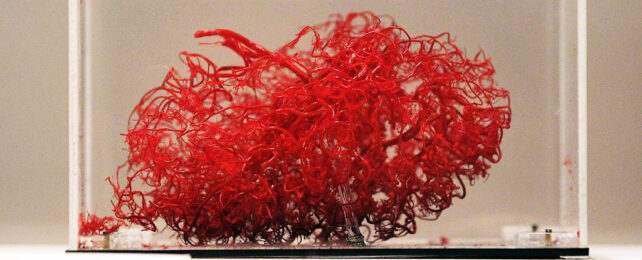In an exciting step, scientists have developed the first potential therapy that can repair the blood-brain barrier in mice.
The new treatment hasn't been tested in humans as yet, so we can't get too ahead of ourselves. But finding a way to stop pathogens and toxins from infiltrating our brain cells could change the way we treat and prevent conditions including stroke, cancer, long COVID, and Alzheimer's disease.
The blood-brain barrier is a layer of cells surrounding the blood vessels that nourish our brains. It's supposed to be selectively impenetrable, which means it only permits materials required to keep a healthy brain functioning to pass into the precious brain tissue.
But when things aren't working properly, undesirable toxins, cells or pathogens can breach the barrier. Cancer cells that make it past the barrier can become tumors; SARS-Cov-2 has been shown to penetrate the barrier and cause brain fog; and too many white blood cells getting through can lead to autoimmune conditions such as multiple sclerosis. And that's just to name a few of the complications.
It's challenging enough for us to get medications through the blood-brain barrier. But finding a way to stop that leak is something that's eluded scientists – until now.
"A leaky blood-brain barrier is a common pathway for a lot of brain diseases, so to be able to seal off the barrier has been a long sought-after goal in medicine," says hematologist Calvin Kuo from Stanford University, who led the research.
"We have evaluated a new therapeutic class of molecules that can be used to treat a leaky blood-brain barrier; previously, there were no treatments directed at the blood-brain barrier specifically."
The researchers' work centers on a family of receptors called frizzled. These proteins initiate the Wnt signaling pathway, which is not only involved in promoting tissue regeneration and wound healing, but is also important for maintaining a healthy blood-brain barrier.
Previous research in mice had shown that mutations in the frizzled gene can cause issues with the blood-brain barrier, especially one particular frizzled receptor called FZD4.
Based on this work, the Stanford team collaborated with a research company to create a molecule called L6-F4-2 that binds to FZD4 to activate Wnt signaling. In fact, it activates the Wnt pathway 100 times more efficiently than other molecules known to attach to FZD4.
To test the new potential therapy further, the researchers looked at mice with genetic mutations that trigger a condition similar to Norrie disease. The mutation prevents the mice from making Norrin, a protein that binds with FZD4.
Mice without Norrin experience blindness due to issues with their blood-retinal barrier in the eye, which works in a similar way to the blood-brain barrier.
But when the team injected one of each mouse's eyes with L6-F4-2 at birth, the blood vessels around the retina were denser and less leaky than the eye that hadn't been treated.
Further studies in older mice showed that L6-F4-2 had successfully activated Wnt signaling in both the retina and the cerebellum.
The researchers then studied a more common condition – ischemic stroke, which involves the blood-brain barrier becoming damaged.
L6-F4-2 given to mice that had strokes reduced stroke severity and improved survival, compared with mice that had untreated strokes.
And most excitingly, L6-F4-2 also appeared to reverse the leakiness of brain blood vessels after ischemic stroke in the mice.
The team is now working on whether L6-F4-2, or a similar molecule, could be used to generate drugs that could one day be trialed in humans.
"We hope this will be a first step toward developing a new generation of drugs that can repair the blood-brain barrier, using a very different strategy and molecular target than current medications," Kuo says.
The research has been published in Nature Communications.
